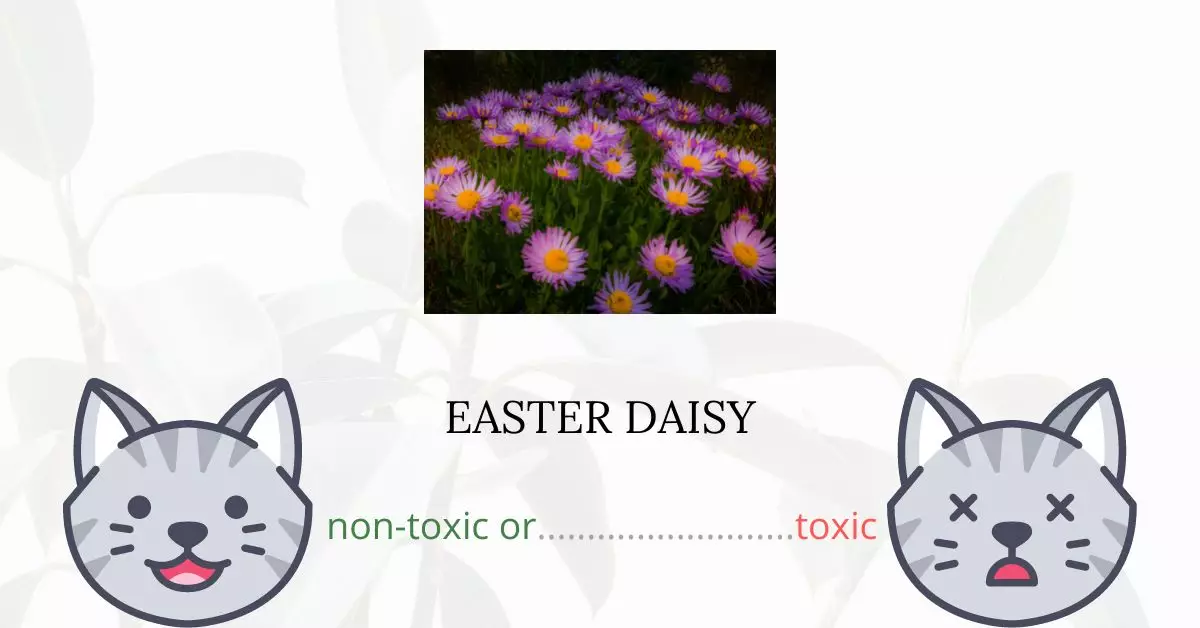Easter Daisies are generally considered non-toxic for cats. However, while they are less toxic than many other members of the Asteraceae family, it’s always best to be cautious and keep a watchful eye on your feline friend.
This article is a collaborative effort, written with input from a team of experienced DVMs (doctors of veterinary medicine). Their expert insights have helped ensure the accuracy and relevance of the information provided, especially concerning the potential risks associated with plants like Easter Daisies and their effects on cats. Additionally, we have conducted extensive research on high-authority websites such as the ASPCA and PetMD to corroborate our findings and present the most up-to-date knowledge.
Can Cats Eat Easter Daisy?

If your cat eats an easter daisy, she may get moderate symptoms, but nothing life-threatening. If a pet eats anything that isn’t technically dangerous, the side effects are minimal, with just moderate gastrointestinal upset such as vomiting and diarrhea possible. That stated anything can be hazardous to your cat if consumed in high-level concentrations.
What is Easter Daisy?

Easter daisy (Townsendia), also known as Michaelmas daisy, is a genus of North American plants belonging to the Astereae tribe of the Asteraceae family. These wildflowers are native to western North America, where they grow in abundance at high elevations. There are 250 species, many of which are popular garden plants due to their attractive daisy-like flowers on tall stems. Several taxa are tall, upright plants, similar to daisies. typically, 20–80cm, with some varieties growing to 1.2m tall. The weight of the blossoms can cause the flower stem to sprawl along the ground, therefore taller species require staking. Others have a more spreading, prostrate appearance or create small, dense, leafy rosettes. The flower heads are frequently colorful and appealing, with ray florets in pink, purple, blue, white, and, on rare occasions, yellow.
Keeping Cats Away From Easter Daisy

Consider sowing grass seed in an indoor planter so that when it sprouts, it’s safe for your cat to eat in little amounts. If you’ve already taught them to use the restroom outside or in a litterbox, you should be able to teach them to avoid your plants.
If your cat is meddling with or digging up your plants, shower them with water to show them that you don’t approve of their conduct. Keeping a spray bottle on hand is a great trick. This will not harm your pets, and they will ultimately avoid going near the plants. Also, remember to reward positive behavior. Give them a treat and plenty of love if they walk away from the plant.
Plants to Avoid For Your Cats
If you are a cat owner and unsure if the plants growing in your yard are harmful to your cats, check out this list of toxic plants for cats. You can also check our list of non-toxic plants for cats.





